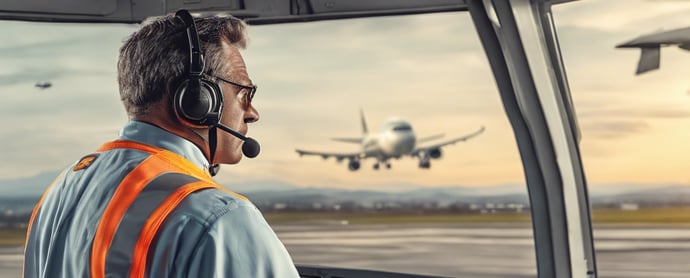
Expectation Bias: A silent Threat in Aviation
In aviation, even the smallest assumption can have significant consequences. one subtle yet potentially dangerous cognitive prejudice is Expectation Bias, the tendency to perceive or interpret information in a way that aligns with our expectations.
Expectation Bias: The Silent Threat in Aviation
In aviation, even the smallest assumption can have significant consequences. One subtle yet potentially dangerous cognitive prejudice is expectation bias, the tendency to perceive or interpret information in a way that aligns with our expectations, often overlooking critical cues that contradict them.
The Origins of Expectation Bias
To understand expectation bias, we need to consider its roots in human behavior. We behave in certain ways as part of our nature and cognitive bias is one of them, a well documented phenomena in psychology and neuroscience, which is a natural part of our conduct. Rooted in the brain's effort to process information quickly and efficiently. Known as Heuristics, these mental shortcuts help us make rapid decisions but can also lead to errors in judgment. Biases often arise from past experiences, and the tendency to seek patters or confirm pre-existing beliefs. In complex environments like aviation, this can manifest as expectation bias, where a pilot sees or hears what they expect rather than what is actually happening.
What is Expectation Bias?
Expectation bias occurs when a pilot’s preconceived notions or assumptions influence their decision-making process. Biases often stems from habit, prior experiences, or incomplete information. As pilots our brains will try to fill the gaps based on information that supports our expectations.
In aviation, where accurate and timely decisions are paramount, such biases can lead to misjudgments, they may arise subconsciously and it is surprisingly easy to fall into the trap, especially under pressure, so understanding their origins can help us recognize and mitigate their influence on decision-making.
How Expectation Bias Develops
Expectation bias is deeply rooted in human psychology. Our brains are wired to detect patterns, rely on past experiences and create shortcuts to reduce cognitive workload (Heuristics), which can be beneficial, however, this reliance on patterns can cause us to dismiss or overlook anomalies that fall outside our expectations. In aviation it develops as result of a pilot´s reliance on past experiences, metal shortcuts, and preconceived expectations to interpret information. This phenomenon is often triggered by the complexity and high workload of aviation environment, where pilots must process large amounts of information quickly.
Real-Life Examples of Expectation Bias in Aviation
1. Runway Incursions: Pilots or air traffic controllers may mishear or misinterpret clearance instructions, expecting a standard taxi route or runway assignment. expectation Bias can lead to actions based on what they think they heard rather than verifying the actual clearance. These errors often occur under time pressure or high workload, making vigilance critical.
2. Student-Instructor Accidents: Instructor might expect students to handle routine maneuvers correctly and fail to intervene in time when a student derivates. Conversely, students might rely on instructors to correct mistakes, leading to dangerous delays in action.
3. ATC Miscommunications: Expectation bias can also arise in communications with ATC. For instance, a pilot expecting right turn instructions for final approach, may be re-vectored for a left turn due to unexpected traffic or weather, leading the pilot to mislead ATC instructions and perform a right turn instead.
4. Practical Test/Checkride Mistakes: Pilots undergoing check rides might expect certain tasks or scenarios to fallow a predictable oder, leading to errors when the examiner introduces unexpected maneuvers. Examiner, too, may expect standard procedures and overlook subtler errors.
5. Instrument Interpretation: A pilot performing a checklist may call all instrument on green without noticing an anomaly, such as an oil pressure gage nearing the upper limit.
6. Checklist Assumptions: A pilot may skip steps in a preflight checklist, assuming everything is in order because it was during the last flight. This can lead to overlooked issues, such as an improperly latched door or unaddressed maintenance discrepancies.
Expectation bias is deeply intertwined with various aspects of aviation safety. Runway incursions often stem from pilots or controllers acting on what they expect to see or hear, rather than verifying actual instructions. Historical accidents like Japan Airlines Flight 123 demonstrate how even experienced crews can misjudge critical situations when their expectations cloud their perception. Training environments are equally vulnerable: instructors may assume students are competent in routine tasks, while students may over-rely on instructors to intervene. Controllers, maintenance teams, and examiners are not immune either, with incorrect instructions, mishandled repairs, and misjudged scenarios all having roots in Expectation Bias. Recognizing how this phenomenon affects decision-making at every level of aviation is vital for improving safety.
Factors that contribute to Expectation Bias in Aviation include:
• Familiarity with the environment
• High workload or stress
• Time pressure
• Confirmation bias (seeking evidence to support an assumption)
Mitigating Expectation Bias
1. Use SOPs Religiously: Standard Operating Procedures (SOPs) are designed to reduce variability and assumptions. By sticking to checklists and established procedures, pilots can avoid jumping to conclusions.
2. Challenge Assumptions: Pilots should regularly ask themselves, “What am I assuming right now?” and evaluate whether those assumptions are based on fact or expectation.
3. Encourage Crew Resource Management (CRM): CRM encourages open communication and cross-checking among crew members. A co-pilot or crew member questioning a decision or observation can prevent expectation bias from becoming a hazard.
4. Practice Scenario Training: Training scenarios that include unexpected situations, such as sudden weather changes or abnormal ATC instructions, can prepare pilots to recognize and overcome expectation bias.
5. Stay Humble and Vigilant: Complacency breeds expectation bias. Maintaining a mindset of continuous vigilance and humility helps pilots remain open to unexpected information.
Conclusion
In aviation, safety depends on a pilot’s ability to adapt to changing conditions and make decisions based on objective data, not assumptions. Expectation bias is a dangerous invisible threat because it can occur without pilot´s awareness, but by acknowledging its existence, maintaining a skeptical mindset to mitigate its effects, and by implementing strategies to counter it, pilots can improve their situational awareness and decision-making. Understanding and addressing expectation bias is a crucial step toward maintaining the highest standards of safety in aviation.




